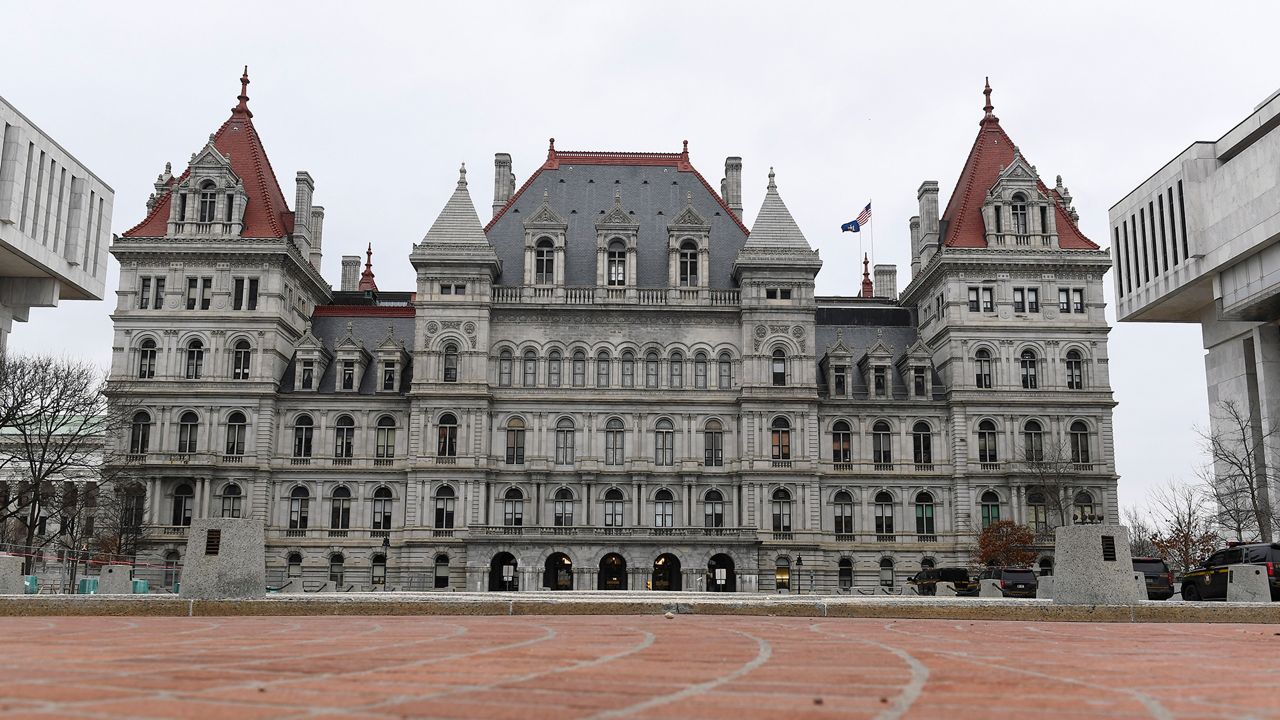In the aftermath of the 2024 elections, which left Democrats without a base of power in Washington, the word "affordability" has become a political yardstick for Gov. Kathy Hochul and other top Democrats in New York.
The notion of affordability has become so paramount that Hochul’s State of the State address features an aptly named “affordability agenda” which she’s begun fleshing out with her first two proposals: inflation refund checks and expanded child tax credits.
But there are other competing needs that could make implementing policies that create affordability tricky for a governor who has, so far, avoided raising new income taxes.
This is also a key year for Hochul whose poll numbers have been languishing, and who faces a tough reelection in 2026.
With this context in mind, here are the five issues that Capital Tonight will be watching over the next few months as the legislative session starts to gain momentum.

Tax hike
Separate from the implementation of congestion pricing, the Metropolitan Transportation Authority’s five-year capital plan is short $33 billion. According to state Assembly Speaker Carl Heastie, that translates into a $2 billion gap for the Legislature to address.
“I don’t want to get ahead of myself, but I am acknowledging that if the MTA plan is to be accepted at its face, it’s about a billion dollars a year operating funds to do bonding, so with a $30 billion hole, you’re probably looking at an additional $2 billion of additional spending for the MTA, so we do have to find that revenue,” Heastie told Capital Tonight on Tuesday.
When asked if he thought a tax increase would be necessary to find that $2 billion, Heastie replied that he wants to wait and see if the state receives significant help from the federal government.
“But there’s only two ways to pay things,” he said. “You either cut or you have to raise revenue, so I assume raising revenue will absolutely be on the table.”
That said, there is stiff opposition to tax hikes from the business community and others.
“We have seen report after report about how New York ranks at the bottom in both affordability and taxes but near the top in out migration. If the legislature is serious about keeping people in New York and being more competitive, it has to start this session by avoiding more costly policies that will impact New York’s employers, and consumers,” Patrick Bailey, director of communications at the Business Council of New York State, said in a statement.

Affordability
Politically speaking, raising taxes signals the opposite of affordability, so what else does the Legislature have in mind? And will it be enough to counter the optics of a tax hike?
Both legislative houses tell Capital Tonight that they plan to concentrate on making child care more affordable, helping families afford groceries and pay utility bills and working to lower the cost of prescription drugs.
Regarding college tuition, last year lawmakers agreed to changes to modernize TAP, the Tuition Assistance Program. They raised the income threshold from $80,000 to $125,000 per year and increased the minimum TAP award from $500 to $1,000. But Megan Ahearn of the New York Public Interest Research Group said in a statement that gaps still exist in educational funding and accessibility.
There simply isn’t enough money to do everything; the question is whether the governor and the Legislature share a vision of what affordability means in New York.

Foundation Aid
Last month, the Rockefeller Institute released its much-anticipated report on Foundation Aid. Big questions remain regarding how lawmakers may respond to the report’s recommendations, including eliminating a provision that reduces aid when student populations shrink.
Last year, Gov. Kathy Hochul wanted to eliminate "Save Harmless,” arguing that student populations were shrinking, and that school budgets needed to be “right-sized."
The Legislature and education advocates argued that before making any big changes, the state needed to take a more holistic look at the formula.
With the release of the Rockefeller Institute’s report, that holistic look has been completed, and the state budget is due in three months.
While the governor has since reversed her position on "Save Harmless," districts could feel a big financial hit from even the smallest changes to the 26-year-old Foundation Aid formula.
“Buffalo receives 73% of their money from the state, 16% from federal. Their local share is so low. If the state doesn’t come through with the funding and the federal government fails to deliver or cuts back, there will be nowhere to go,” the Conference of Big 5’s Jennifer Pyle told Capital Tonight.
School districts across the state are closely watching how this plays out.

Climate
Environmental activists are celebrating a major victory with passage of the Climate Change Superfund Act. The law will raise $75 billion over 25 years from the oil and gas companies most responsible for the climate crisis. The money will help pay for climate adaptation and resilience projects across the state, but the likelihood of litigation around the new law is very high.
While the law was opposed by a coalition of groups, there are also plenty of New York taxpayers who are concerned about the pace and cost of bills linked to the Climate Leadership and Community Protection Act (CLCPA).
One example is the mandate for school districts to transition to zero-emission school buses. Enacted a few years ago, the mandate requires districts to begin purchasing zero-emission buses exclusively starting in 2027. They must also cease using internal combustion buses by 2035.
Many school officials say the mandate is not realistic, the cost of the new buses is prohibitive and the electric buses can’t serve some routes. Additionally, charging capacity is not adequate.
Will the Legislature move full speed ahead on policies like this because climate change is such an enormous issue, or will members consider delaying the deadlines?

Serious mental illness
For years in Albany there have been two schools of thought regarding treating serious mental illness: One group pushes for more funding and greater financial support. The other advocates for more aggressive policies, including the strengthening of Kendra’s Law, and expanding the state’s involuntary commitment standards.
After a series of brutal attacks in New York City by people with a history of mental health issues, Hochul last week came down on the side of the latter group.
“Public safety is my top priority, and I will do everything in my power to keep New Yorkers safe,” Hochul said in a statement.
On Jan. 14 in her State of the State address, she has committed to introducing legislation to expand the definition of who hospitals are able to commit, as well as legislation to improve the process through which a court can order certain individuals to participate in assisted outpatient treatment.
But there is tremendous pushback from both sides to changing the standard for involuntary commitment.
The governor isn’t alone in her desire to address this issue. The state Legislature has also taken an interest.
One bill, sponsored by state Sen. Brad Hoylman-Sigal and freshman Assemblyman Micah Lasher, expands the array of professionals who can commit people to involuntary hospitalization or assisted outpatient treatment.
According to Lasher, the so-called “HELP Act” will likely be a heavy lift in the state Legislature, but Lasher says he’s ready for a compassionate conversation around the issue.
Glenn Liebman, executive director of the Mental Health Association in New York State, insists the more aggressive approach being discussed is the wrong one.
“We sensationalize mental health issues as the sole reason for what happens and that’s not true at all…We have to wait for more specifics to find out what we are talking about, but by and large, I think we should be more focused on community services and supports,” Liebman said in a statement on MHA website.


